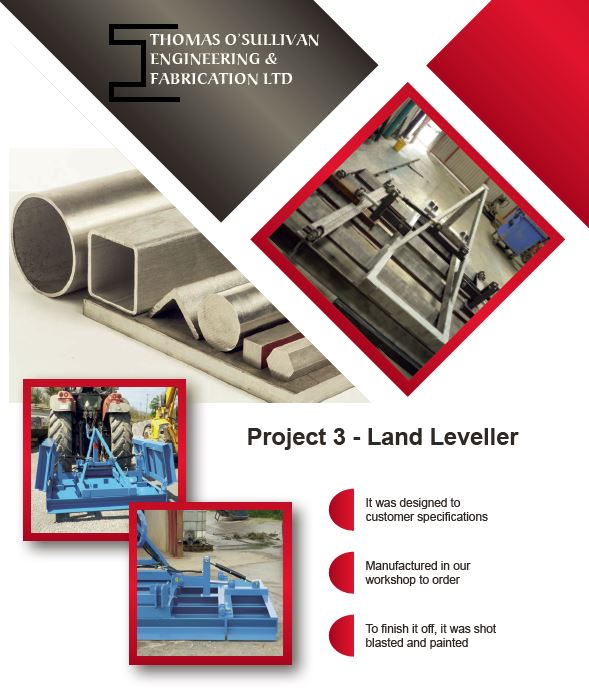Content
These are examples of key questions that could be asked during the testing phase. Although SDLC is not our preferred framework, it is one that we are quite familiar with and have inherited several projects using this methodology. In many instances, SDLC is a fine starting point but lacks some of the core benefits of modern Agile Software Development.
_____ feasibility addresses the human issues of an information systems project. Testing is the fifth phases of SDLC which helps to verify appropriate testing and integration of each element in the system. SDLC models can thus assist projects in iterating and improving on themselves until they are essentially ideal. Team members can depart and be replaced rather smoothly because SDLCs include well-structured papers covering project goals and processes. Checks and balances are built into SDLC models to ensure that all software is thoroughly tested before being integrated into larger source code. At the start of development, there was no idea how the final product would look.
It entails determining and defining the project scope in order to develop a complete action plan for the project, as well as identifying the issues that the solution will address. Phase 9 of the systems development life cycle is when plans are initiated to discard system information, hardware, and software in a transition to a new system. It is important to dispose of system information discreetly and securely, as much of the information can be of a personal nature.
System Development Life Cycle: Development
The system specification represents the technical requirements that will provide overall guidance for system design. Because this document determines all future development, the stage cannot be completed until a conceptual design review has determined that the system specification properly addresses the motivating need. The product life cycle describes the process for building information systems in a very deliberate, structured and methodical way, systems development life cycle in order reiterating each stage of the product’s life. In this step, you move your project to production by moving data and components from the old system and placing them directly on the new system via a cutover. This can be a risky move, but switching is usually off-peak and minimizes risk in system development life cycle phases. The system development life cycle (“SDLC” for short) allows users to migrate newly developed projects to operational projects.
GLYCOMIMETICS INC MANAGEMENT’S DISCUSSION AND ANALYSIS OF FINANCIAL CONDITION AND RESULTS OF OPERATIONS (form 10-Q) – Marketscreener.com
GLYCOMIMETICS INC MANAGEMENT’S DISCUSSION AND ANALYSIS OF FINANCIAL CONDITION AND RESULTS OF OPERATIONS (form 10-Q).
Posted: Wed, 09 Nov 2022 13:33:14 GMT [source]
Especially when programmers, network engineers, and database developers are brought in to do the main work of the project. Helps define problems and the scope of existing systems and determine goals for new systems. The testing phase plays an important role in system development life cycle because it improves performance and reliability of developed system.
What is the difference between family systems theory and systems theory?
This design phase of SDLC process includes the design of system’s architecture, network diagram, databases, user interfaces, and system interfaces. Planning stage is the vital stage of the system development life cycle process because it determines required resources, timeframe, budget, personnel, technical aspects to complete the project. A system development life cycle or SDLC is an organized project management model that defines or involves different stages for developing and implementation of a system successfully. In this post we will explain complete 7 stages of system development life cycle. A system development life cycle is a conceptual model that delineates the stages involved in developing and implementing a system.
Depending upon the size and complexity of the project, phases may be combined or may overlap. We also provide examples of expected output, describe team members needed, and share resources for individual learning. Define and set your GOALS based on your client/end-user needs, requirements and skill set. End-User refers to the person who will eventually end up using the solution on a daily basis.
Developers need to enter maintenance mode and perform the activities necessary to resolve issues reported by end-users. This is a preliminary plan of a company’s business initiative to acquire resources to build an infrastructure to change or improve services. Companies may also try to meet or exceed the expectations of their employees, customers, and stakeholders. The Software Development Life Cycle approach is used to help users see and understand the activities involved in a particular step. It is also used to let you know that you can repeat a step at any time or modify a previous step if you need to change or improve your system. If an organization has an old system so, they can migrate or moving the data in the new develop system.

System Testing – conducts testing on a complete, integrated system to evaluate the system’s compliance with its specified requirements. Unit Testing – takes individual units of software source code and tests them to determine whether they are fit for use. A cost benefit analysis is a systematic approach to estimating the strengths and weaknesses of alternatives and is used to determine options that provide the best approach to achieve the most benefit. In the ideal situation, execution is so smooth that no effort is required when the integration happens. If it is possible, integrating a new system into a company should be automatic and streamline.
Feasibility or Requirements Analysis Stage
Each stage must be completed in its entirety before moving on to the next; once a stage is done, it cannot be revisited. It explains how each and every aspect of the product, as well as each component, should function. This phase lays out what will happen during the project’s life cycle and decides whether or not it will succeed. At this point, the team structure, time frame, budget, security, and other critical issues should all be considered.
Control objectives help to provide a clear statement of the desired result or purpose and should be used throughout the entire SDLC process. Control objectives can be grouped into major categories , and relate to the SDLC phases as shown in the figure. Several systems development frameworks have been partly based on SDLC, such as the structured systems analysis and design method produced for the UK government Office of Government Commerce in the 1980s. In the operations and maintenance phase, developers watch software for bugs or defects. During maintenance, it is important to consider opportunities for when the development cycle starts over again. The programming code is built per the DDS , so the product can be created with the utmost efficiency.
- Economic Feasibility – determines the positive economic benefits that the system will provide .
- CASE (Computer Aided Systems/Software Engineering) – organizes and controls the development of software or systems through use of a computer-assisted method.
- It’s critical that the programme meets the quality requirements outlined in the SRS document.C++, PHP, and other programming languages are examples of common programming languages.
- These are examples of key questions that could be asked during the testing phase.
- It is important that the entire software meets the quality standards previously defined in the SRS documentation.
- Another part of this phase is validation and validation in system development life cycle phases.
- They develop relationships with their parents and other caregivers, and learn how to interact with their environment.
When you are finished, your plan should be something the entire team can understand. During this stage, you as the developer review the completed project and evaluate what you have done well and where you could improve. This information https://globalcloudteam.com/ will be handy to make you a better developer in the future. Along with this, you will regularly provide system updates to make sure that the final product/solution is continually meeting your client’s expectations.
System Development Life Cycle: Design
It consists of a set of steps or phases in which each phase of the SDLC uses the results of the previous one. Stage 5 is where the development team tests the software for errors and deficiencies. Does it fulfill the requirements and objectives initially outlined in the SDLC?
The seventh final phase of the system development life cycle phases includes maintenance and the required regular updates. This step allows the end-user to fine-tune the system as needed to improve performance, add new features, or meet additional user requirements in system development life cycle phases. During the testing phase of system development life cycle phases, developers examine the software with a fine-toothed comb to note bugs and defects that need to be tracked, fixed, and retested later. It is important that the entire software meets the quality standards previously defined in the SRS documentation. Requirements analysis is the second stage of 7 stages system development life cycle.
Importance of the SDLC
Object-oriented analysis is the process of analyzing a task , to develop a conceptual model that can then be used to complete the task. A typical OOA model would describe computer software that could be used to satisfy a set of customer-defined requirements. During the analysis phase of problem-solving, a programmer might consider a written requirements statement, a formal vision document, or interviews with stakeholders or other interested parties.
This stage includes the development of detailed designs that brings initial design work into a completed form of specifications. This work includes the specification of interfaces between the system and its intended environment and a comprehensive evaluation of the systems logistical, maintenance and support requirements. The detail design and development is responsible for producing the product, process and material specifications and may result in substantial changes to the development specification.
In the second phase, the organization addresses the root cause of the problem or the need for change. If you encounter a problem, present and analyze possible solutions to determine the best solution for your project’s ultimate goals. The purpose of this step is to find the scope of the problem and determine the solution. In this phase, you need to consider resources, costs, time, benefits, and other factors.
Management and control
Developers use various tools and programming languages to build the code. Step-by-step development process with the goal of creating high-quality software that meets or exceeds customer expectations. Focusing on training can be of great benefit at this stage of system development life cycle phases. Here, the team considers the functional requirements of the project or solution. Or an analysis of the end-user needs to ensure that the new system meets expectations.
Knowing the benefits and drawbacks of a system development life cycle will aid you in making the best decision for your system. This can include resolving new issues that arise as a result of user reports or dealing with leftover bugs that were not able to be corrected before launch. In comparison to smaller systems, larger systems may require more maintenance phases. This phase produces a High-Level Document and a Low-Level Document, which are used as inputs in the next phase of 7 stages of system development life cycle.
By outlining the points above, team members can ensure they are injecting their software projects with the right focus. The document is shared with the development team, which then uses it in the next stage. Business analysts gather requirements from their customers, target market, and industry experts to create a Business Specification document.
This post offers a thorough examination of the system development life cycle. You will understand what an SDLC is, 7 stages of system development life cycle, and why it is vital by reading it. CASE (Computer Aided Systems/Software Engineering) – organizes and controls the development of software or systems through use of a computer-assisted method. Using CASE allows everyone to share a common view of the project and where it stands at each stage of development.









Leave a Reply